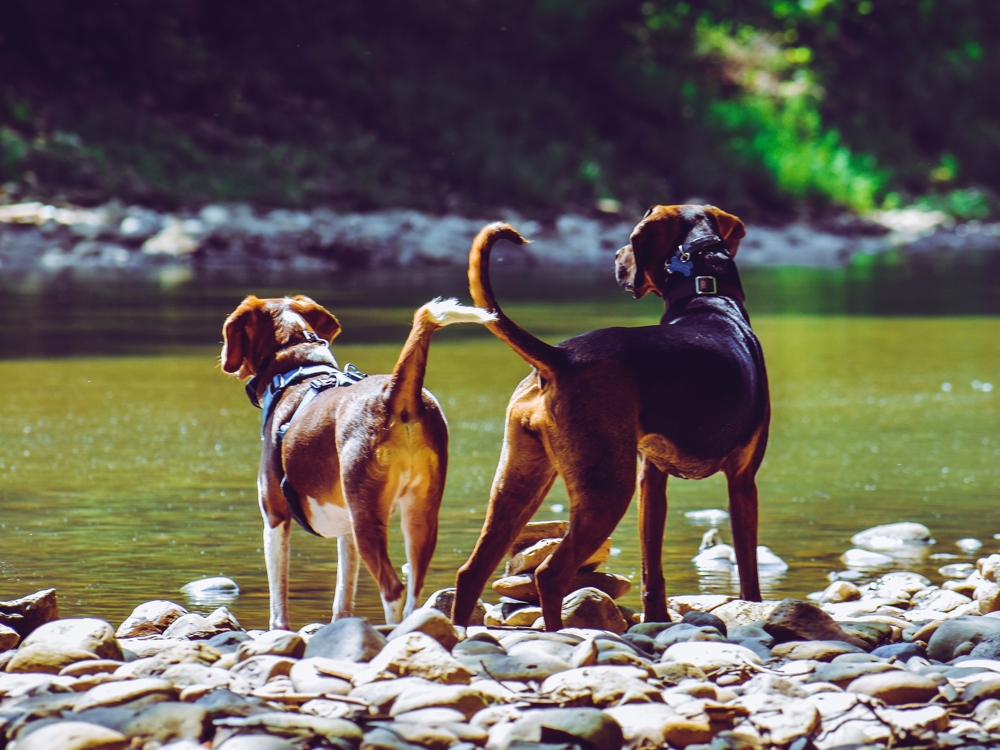How Much Raw Food Should I Feed My Dog?
Share
[Sassy_Social_Share]Dog owners are getting more proactive about their beloved pet’s health, and diet is at the top of the list of their concerns. Rightly so! Nutrition is vital to well-being. One new approach is getting a lot of attention. Raw food diets for dogs stir up a lot of debate. Some swear this is the optimal way to feed your dog, while others argue that the risks of food poisoning are too high. What’s the truth? What does science tell us? How can the average dog owner decide how much raw food to feed dogs or if they should feed any at all when they hear conflicting views from veterinarians?

Picking your dog’s food is a decision that will impact his health, so it is worthwhile to spend a little time learning about the options. Generations ago, dogs mostly got leftovers of whatever the humans were eating. They survived, but arguably they probably would have had longer and healthier lives on a diet geared for their nutritional needs. And generations ago, people ate healthier food without all the processed things we eat today. Today, realistically, most dog owners are choosing between the various dry nuts available at the pet shop or grocery store. But some are opting to prepare food at home for their dogs, and a number of them are feeding a raw food diet for dogs.
What Is a Raw Food Diet for Dogs?
In the early 1990s, an Australian vet named Ian Billingshurst began advocating for feeding pet dogs a diet of raw meat, bone and vegetables. He argued that many racing greyhounds and working sled dogs were doing well on this raw diet and that is was what the ancestors of today’s pet dogs ate. Now the internet is full of advice about what and how much raw food to feed dogs. Ironically, while this approach initially appealed to people who were worried about commercial foods using inferior ingredients, commercial raw food for dogs is now available.
The recipes for raw dog food typically call for raw ground meat, eggs and a small amount of vegetables such as carrots and spinach. Some include ingredients unavailable to canines in the wild, such as yogurt and flaxseed.
Advocates claim a raw food diet will improve a dog’s overall health, give them a shiny coat, cleaner teeth and more energy. But is it safe? What about the risk of dangerous bacteria in uncooked meat and eggs?
Is Raw Food Safe for Dogs?
In Ireland and Great Britain, we don’t see a lot of expert advice about feeding dogs raw food. But in the USA, some high-profile organisations are taking a stand opposing a raw food diet for dogs and cats. The primary issue is the risk of illnesses such as salmonella, e-coli and listeria. Feeding your pet raw food can also expose others in the household to any pathogens in the meat or egg, and this is especially dangerous for children, the elderly or anyone with a compromised immune system.
The American Veterinary Medicine Association’s official statement explains that the group “discourages the feeding to cats and dogs of any animal-source protein that has not first been subjected to a process to eliminate pathogens because of the risk of illness to cats and dogs as well as humans.” They note that the traditional method of killing pathogens in meat and eggs has been to cook them, but that new options are becoming available. But not many of us have the technology to pasteurize or irradiate food in our homes.
The American College of Veterinary Nutrition also addresses the question of how much raw food to feed dogs by warning of the dangers on their website. They cite the risk of an unbalanced diet as well as illness, and stress that no studies have been done to back up the claims of raw foods advocates. The argument in favour of a raw food diet for dogs is based on individual reports of benefits, not structured, peer-reviewed studies with a control group.
Their views are shared by the American Animal Hospital Association, whose website says, “Based on overwhelming scientific evidence, AAHA does not advocate nor endorse feeding pets any raw or dehydrated non-sterilized foods, including treats that are of animal origin.”
How to Get the Benefits of a Raw Food Diet for Dogs without the Risk

The reason people want to know how much raw food to feed dogs is because they want the benefits they’ve heard this diet offers dogs – vibrant health, a shiny coat, clean teeth and abundant energy. Every dog owner has to consider their dog’s specific needs and their own time and other constraints when deciding if a raw food diet is appropriate. For many dog owners, the risks of a raw food diet and the time involved in preparing it are too much. Your dog does not have to risk disease to enjoy excellent health if you provide her with a safe, nutritious and appropriate dry dog food.
Talk to your vet about your dog’s specific needs. Large breeds need extra joint support such as chondroitin and glucosamine. Small dogs need smaller nuts they can easily chew. Working dogs need more calories than couch-loving companion dogs. Connolly’s Red Mills is aware of the wide range of canine nutritional needs based on a dog’s breed type, lifestyle, age, etc. That’s why we make so many different formulations of dog food to suit everyone from a bounding Border Collie to a couch-loving Cavalier Spaniel.





